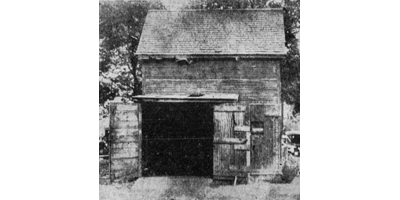by Bruce Cherney (part 3)
Leslie Montgomery, a Winnipeg Electric Company (WECo) guard, said he was taken by surprise by the robbery of the company’s payroll and the assault on messenger Richard Shaw. While the crime was in progress, Montgomery said he didn’t know what to do, although he did try to get to Shaw when he saw him being savagely struck about the head with a pistol wielded by one of the bandits.
“It looked to me as if Shaw (who was carrying the $87,000 payroll in a satchel) had been killed, and I never got a good look at the fellow who was holding me back,” he told a Winnipeg Tribune reporter a day after the August 14, 1925, heist by five men.
Montgomery said he ran out of the WECo headquarters at the corner of Notre Dame Avenue and Albert Street, where the robbery took place, and saw the five men jump into the company car driven by their hostage Sydney Knowler, a WECo guard, and take off. He then ran back to help Shaw, who was also described in reports as an assistant cashier at the WECo.
On the evening of the robbery, Detective Webster of the Winnipeg Police found the WECo Studebaker used for the getaway hidden in a private garage at the corner of Balmoral and Ellice, but none of the bandits were present and they remained at liberty.
The police investigation revealed that a man on Thursday afternoon, “presumably one of the robbers,” had gone to the office of Thomas Jackson & Sons, contractors, 370 Colony St., and gave the name of Ray Jones. Using this alias, the man got particulars of a small garage behind a house at Colony and Ellice the firm was offering for rent. He accepted the firm’s terms and paid a deposit on the rent.
The Tribune on August 15 reported that the man who rented the garage was described as wearing a serge blue suit, sported a straw hat, was of medium build and was between 30 and 35 years old. Jones was met at the private garage by R.G. McBain of Thomas Jackson & Sons, who asked him if he wanted to rent the garage. Jones replied, “Yes.” Jones was told the rent was $5 per month.
He told McBain he needed the garage for two to three months. Jones paid the first month’s rent and McBain then gave him a lock and walked back to his office and wrote out a receipt, but Jones never came back to claim it.
It was to this garage that the bandits headed after their getaway in the WECo’s Studebaker.
“They had outdistanced their pursuers to such an extent that they thought it safe to endeavor to conceal the automobile. When they tried to drive the vehicle into the building, however, they found that it was too small for the big Studebaker (A Big Six model?), and the end of the car was exposed” (Winnipeg Free Press, August 15, 1925).
Webster noticed the vehicle with its rear sticking out while investigating the crime, and by comparing its license number and descriptions of the Studebaker knew it had been at the scene of the robbery.
“It was stated that no car had been left in the building previously, and that as far as can be ascertained the robbers did not secure another vehicle. The assumption is that they are in hiding in the city.”
On August 15, the Tribune reported that three women saw the robbers abandon the Studebaker. Mrs. Robert Glass, Mrs. Fred Hadlock and Mrs. Catherine Horn, who all lived in the immediate vicinity of the garage, told the same story of only three men being present when the car was abandoned. Apparently, the three men took their time parking the Studebaker in the garage and once finished leisurely walked down Colony to Portage Avenue.
The three women said none of the men were carrying a satchel.
There were also conflicting accounts of an Essex car closely following the Studebaker as it dashed from the crime scene. Others said there was no such car present.
Meanwhile, police expressed confidence that the men came from south of the border and had spent considerable time rehearsing the robbery.
It was further believed that a sixth man who didn’t take part in the robbery had sheltered the two men who didn’t go to the private garage.
“With over 24 hours from the time of the robbery to more completely plan their getaway, police are working on the theory that the bandits have separated and that each will probably seek different methods and directions of flight. The authorities say it is quite possible that some of them may still be in the city and every possible haunt is being combed by city detectives” (Tribune).
The Royal North West Mounted Police (now RCMP) and U.S. border and police forces had been alerted to be on the look out for the gang, “to draw the net down on every possible road of escape.”
What was called the “first definite clue” to their whereabouts was an August 21 report that five men answering the descriptions of eye-witnesses were seen in Brandon on the night of the robbery. They had registered in a local hotel, but had not again been seen since the first reports of their presence and it was assumed they made their escape westward.
It was further speculated that the robbers were members of an international gang of organized criminals who had raided the U.S. Mint at Denver, Colorado, in 1922 and stole $200,000, and that same year carried out the daring $75,000 theft of the civic payroll in Vancouver, B.C.
(Next week: part 4)



